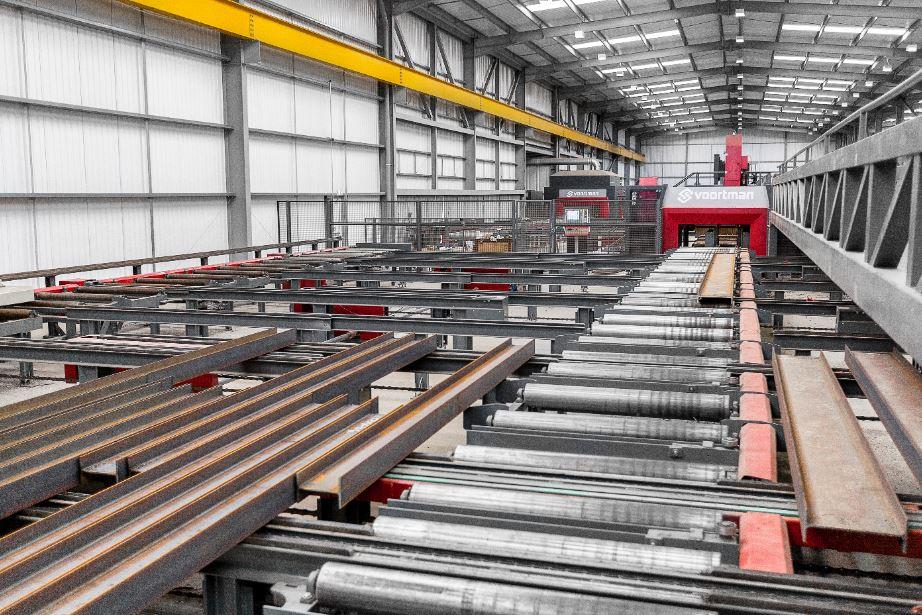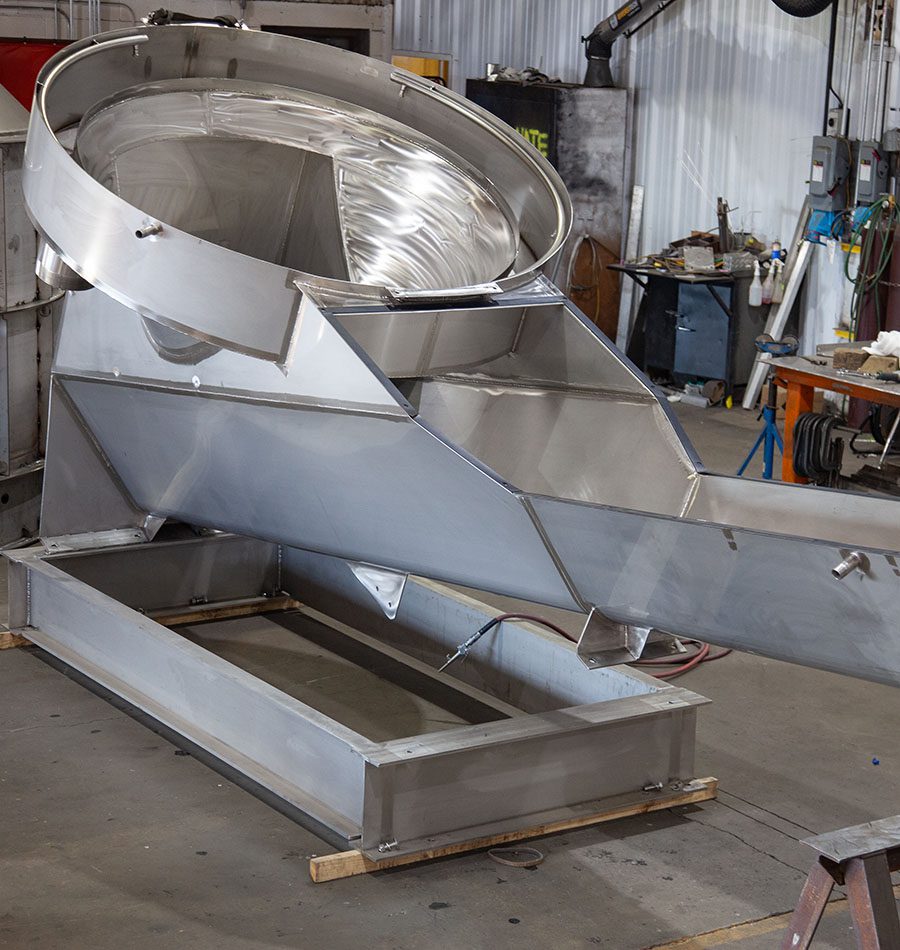Why Alpha Reo Is the Top Selection for Steel Reinforcement
Why Alpha Reo Is the Top Selection for Steel Reinforcement
Blog Article
Ingenious Fads in Steel Manufacture: Enhancing Resilience and Precision
In the world of steel manufacture, the search of longevity and precision has led to a wave of innovative fads that are reshaping the sector. These fads are not simply forming the existing however also laying the foundation for the future of steel fabrication, promising further enhancements in sturdiness and accuracy.
Advanced Welding Technologies
In the world of steel fabrication, the adoption of sophisticated welding modern technologies has considerably revolutionized the market's approach to achieving remarkable quality and accuracy in structural welds. Advanced welding modern technologies, such as laser beam welding and friction mix welding, have actually become game-changers in the field. Laser beam welding utilizes a concentrated laser beam to sign up with metal elements with impressive precision and rate, making it optimal for thin products and intricate layouts. On the various other hand, friction mix welding produces extremely strong bonds by mechanically intermixing the particles of the materials at the joint, removing the demand for thawing the steel. These innovations provide countless benefits, consisting of lowered heat-affected areas, marginal distortion, and improved mechanical residential properties in the welded joints. By leveraging these sophisticated welding techniques, steel producers can boost the longevity, strength, and precision of their architectural welds, meeting the progressively requiring requirements of modern-day building projects.
Robotic Automation in Construction
Embracing robot automation has become a foundation of contemporary steel manufacture methods, improving processes and boosting performance across the market. Robots are reinventing the way steel elements are manufactured, providing unrivaled precision and rate while minimizing human mistake. These automated systems can take care of recurring jobs with regular accuracy, leading to better final product.
One trick advantage of robotic automation in steel construction is the ability to work around the clock without exhaustion, dramatically increasing manufacturing output. This continuous operation minimizes downtime and increases project timelines, inevitably conserving expenses for makers. Furthermore, robots can be configured to carry out elaborate tasks that may be tough or unsafe for human workers, boosting safety in the work environment.
Furthermore, robot automation enables smooth combination with various other digital modern technologies, such as computer-aided layout (CAD) software application and Internet of Points (IoT) systems (Alpha reo). This interconnected technique improves interaction in between different phases of manufacture, optimizing operations and making sure real-time surveillance and control. As the steel manufacture market continues to advance, robotic automation stands out as a transformative force driving performance and precision in manufacturing procedures

High-Strength Alloy Development
The innovation of high-strength alloy growth in steel manufacture is improving the industry's approach to boosting product sturdiness and performance. High-strength alloys are engineered to display premium mechanical homes, such as raised tensile stamina, strength, and rust resistance contrasted to traditional steel grades. By including these sophisticated alloys right into construction processes, makers can produce elements that withstand greater stress levels and rough settings, bring about even more sturdy and reliable output.
One key advantage of high-strength alloy advancement is the ability to reduce material thickness without jeopardizing structural stability. This not only causes lighter-weight components but additionally adds to cost financial savings and boosted effectiveness in manufacture and assembly processes. The improved strength-to-weight ratio of these alloys enables for the style and building and construction of frameworks with higher load-bearing capacities while minimizing overall weight.
3D Modeling and Simulation Software Application
Improvements in steel manufacture procedures have actually been significantly propelled by the integration of advanced 3D modeling and simulation software application tools. These tools enable fabricators to develop thorough digital models of their tasks, enabling them to imagine the final item with accuracy before any manual labor starts. By replicating various stress and anxiety elements, ecological conditions, and architectural tons, makers can enhance layouts for enhanced longevity and performance. Additionally, 3D modeling and click this simulation software application simplify the manufacturing procedure by identifying possible issues at an early stage, minimizing the requirement for expensive rework and decreasing material waste.

Lasting Practices in Steel Production
Integrating sustainable techniques into steel production procedures is essential for lessening environmental influence and guaranteeing long-lasting source schedule. One essential lasting technique is the fostering of energy-efficient technologies to decrease greenhouse gas emissions during the steel production procedure. This includes utilizing renewable resource sources, such as solar or wind power, to power steel plants and carrying out energy-efficient devices to enhance energy use.
One more vital facet of lasting steel manufacturing is the responsible sourcing of raw products. This includes making certain that the iron ore and various other resources made use of in steelmaking are gotten from ecologically pleasant and honest sources. By advertising transparency in the supply chain and sticking to rigorous environmental standards, steel makers can reduce the unfavorable impacts of resource extraction on regional ecosystems and communities.

Verdict
In conclusion, the innovative patterns in steel manufacture such as sophisticated welding technologies, robotic automation, high-strength alloy growth, 3D modeling and simulation software program, and sustainable practices are improving the longevity and precision of steel products. These innovations are revolutionizing the steel fabrication market by boosting high quality, performance, and sustainability. It is clear that the future of steel construction hinges on embracing these sophisticated innovations to fulfill the needs of modern building and production industries.
In the realm of steel fabrication, the pursuit of resilience and accuracy has led to a wave of ingenious patterns that are More Info reshaping the sector.In the world of steel manufacture, the fostering of advanced welding modern technologies has dramatically changed the market's strategy to achieving premium quality and precision in architectural welds. As the steel fabrication sector continues to progress, robot automation stands out as a transformative force driving effectiveness and precision in making procedures.
Additionally, reusing and recycling steel scrap and waste materials play a considerable role in enhancing the sustainability of steel production. steel fixing.In conclusion, the ingenious patterns in steel construction such as advanced welding technologies, robot automation, high-strength alloy development, 3D modeling and simulation software application, and lasting methods are boosting the durability and accuracy of steel items
Report this page